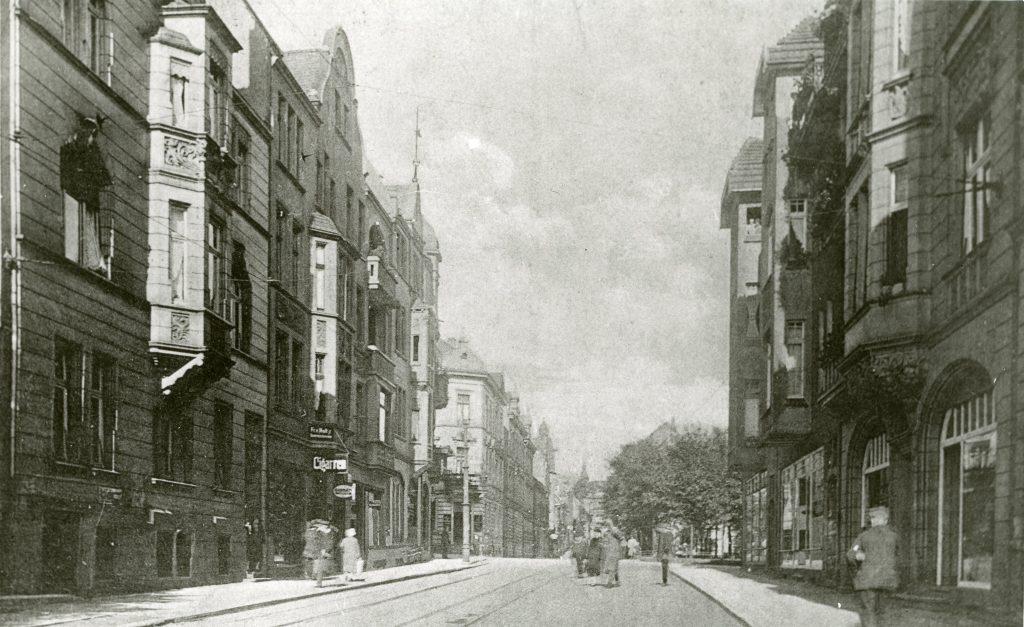Stop 2: Prof. Dr. Eduard Schott
Birkenweiher 43 – go to map – go to starting point
Eduard Schott was born in 1886 and grew up in Worms. While studying medicine, he was deeply impressed by a well-known fellow student: Albert Schweitzer. It was under this influence that he converted from the Jewish community to the Protestant Church. In 1911, Eduard Schott received his approbation. He worked as chief physician in the field hospitals at the Western as well as the Eastern front from 1914 until 1918; in his CV, he commented briefly on this: “experience with war epidemics, periodic surgical tasks” [translation M.B., 2021]. In 1917, he married Ilse Gumprecht, a non-Jewish nurse from the Johanniter order, who also worked at the field hospitals.
Before World War I, he had taught at the Academy for Practical Medicine in Cologne. In 1919 he joined the newly founded University of Cologne as a lecturer and in 1921 became an associate professor. On 1 October 1927, he started working in Solingen: he became chief physician in the department of internal medicine and medical director at the municipal hospital. You will find more information about the years that followed at stop 8 of this tour. Here, at Birkenweiher 43, we will only go into how the developments hit bottom in 1938.

Historical view of Birkenweiher, house nr. 43 is on the right. Source: City Archive of Solingen, PK 1175
After the 4th decree of the Reich Citizenship Law had annulled the licenses of Jewish doctors as of 30 September 1938, Dr. Schott lost his private medical practice. Also, his flat was destroyed during the „Kristallnacht“ of 1938 and he was temporarily put into “protective custody”. In 1988, his son Francis described how he experienced the night of the pogrom as a 12-year-old in an article for the New York Times:
„A jarring sound jolts us awake in the middle of the night. Glass and wood of the apartment door shatter. My little sister and I sit up in our beds, uncomprehending. The noise gets louder yet, things are breaking and gruff male voices can be heard. My mother slips in from the adjacent bedroom and stations herself inside our closed door. Heavy steps rush from the living room at the front of the apartment to the dining room at its end. The sound of destruction heightens as china and crystal are thrown into the corridor.
Recollection by Francis Schott in the New York Times, November 1988
Suddenly I know. The Nazis have come to get us. They are smashing our things. My mother is trying to protect us. Inexplicably, the cold fear that grips me is not for my own life but for my mother’s. The Nazis will kill her. I cower.
Then they are gone. […] My father’s Italian cello is nothing but splinters, the Bechstein piano smashed beyond repair. The Emil Nolde watercolors and Paul Klee drawings are on the floor, crushed. […]
Worse is to come, much worse. But on Kristallnacht, a 12-year-old has absorbed a lesson. The orderly world in which only the police can get you and won’t come unless you are a criminal – that world is gone.“
Professor Schott got incarcerated at the police prison of Potsdamer Straße, but was released shortly afterwards to prepare his emigration. He managed to emigrate to the USA as early as May 1939, while his wife, together with their four children, moved to Weimar where her parents lived.
